Can you eat the skin of a sweet potato? Sweet potatoes are very tasty and a staple in various cuisines, however, some doubt remains about skins. A lot of people ask whether it is safe to consume them. Don’t worry; all this and more will be answered.
Keep reading to discover if you can eat sweet potato skins, their nutritional benefits, and the correct preparation and cooking methods.
Let’s get started!
Contents
Is the Skin of a Sweet Potato Safe to Eat? Answer Revealed!
Yes, the skin of a sweet potato is edible. Consuming them will not harm you in any way. They also have lots of benefits such as:
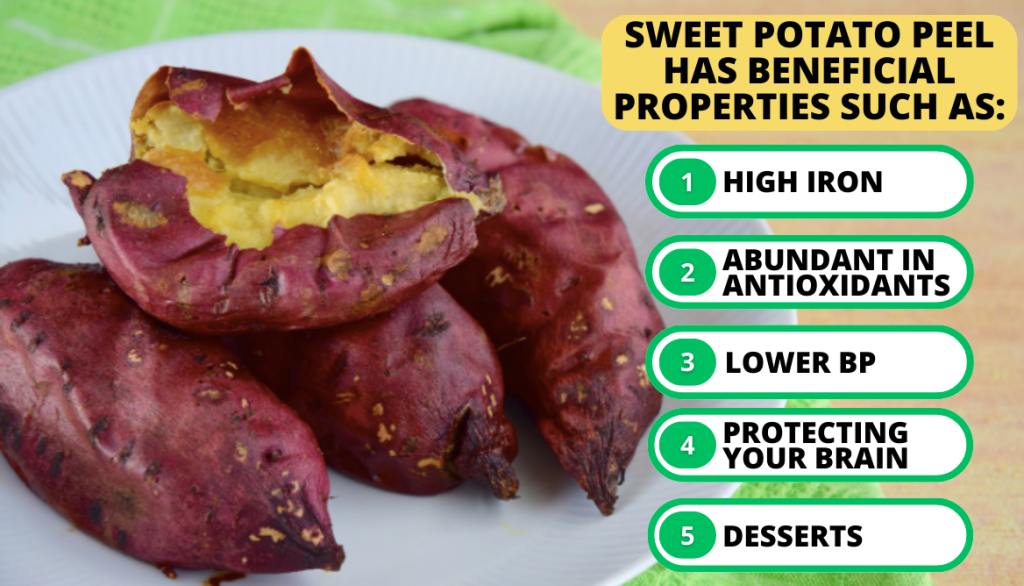
- High Iron: The iron content makes eating sweet potato skin a healthy food option. It’s common knowledge that iron aids in managing cardiac functions and wellness.
- Abundant in antioxidants: The abundance of antioxidants found in the peels is very beneficial to the body’s immune response.
- Lower BP: The chemicals called anthocyanins have been shown to decrease blood pressure, and are found in abundance in purple sweet potato skin.
- Protecting Your Brain: It might be beneficial to consume the skin for proper brain growth, according to preliminary research.
- Desserts: Researchers investigated and found plenty of health advantages of using powdered sweet potato peel in baked goods.
Comparing Fresh and Dried Sweet Potato Skins
The nutritional value and calorie content of fresh sweet potato skins and dried ones are different. Let me show you the main distinctions between them.
- Dried sweet potato skins are a high-calorie snack, whereas a small roasted sweet potato has just approximately 54 calories.
- Furthermore, a small sweet potato with the skin on has higher total fats than the dehydrated skins do. The former has around 11.4 grams of fat, whereas the latter has only 0.1 grams.
- A single pack of sweet potato skin snacks can have as much as 157 milligrams of sodium, while a complete small sweet potato with the skin on has only 21.6 mg of salt.
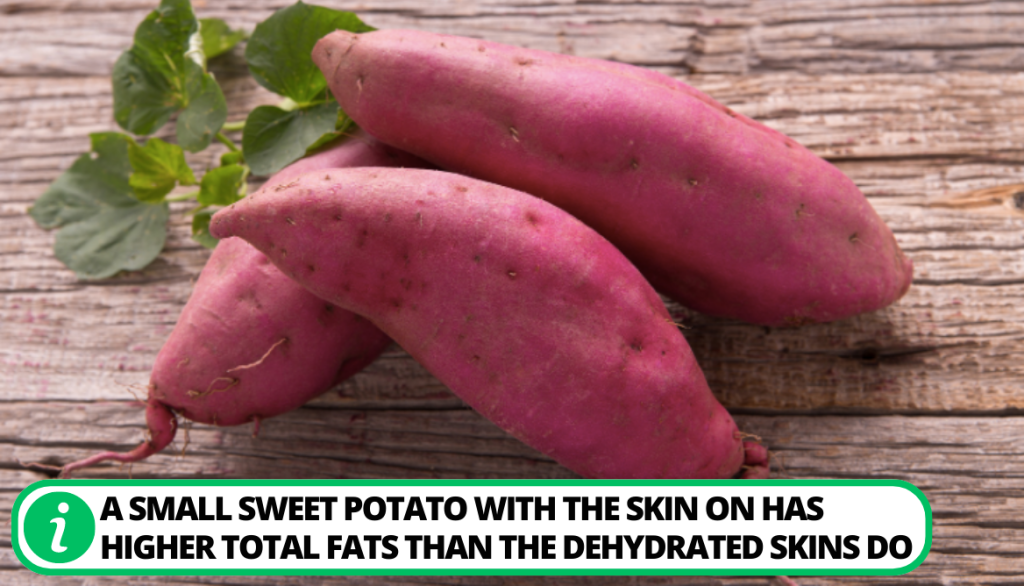
Finally, since the carbohydrate component accounts for the vast majority of its calories, a small bag of sweet potato skin snacks has roughly 23 grams of carbohydrates. In conclusion, if you’re trying to make better food choices, snacking on fresh sweet potato skin is the way to go.
Nutritional Value Of Sweet Potato Skins
Packed with nutrients, sweet potato skins are edible and rather tasty. Phytochemicals, vitamins, minerals, and fiber are all present in them.
Learn about the six essential elements contained in sweet potato peels below.
1. Fiber
The majority of the fiber is located in the skin. When baked, the peels contain more fiber than a similar amount of oats.
Consuming a diet high in fiber can aid in cholesterol reduction, regulating blood sugar, and intestinal regularity.
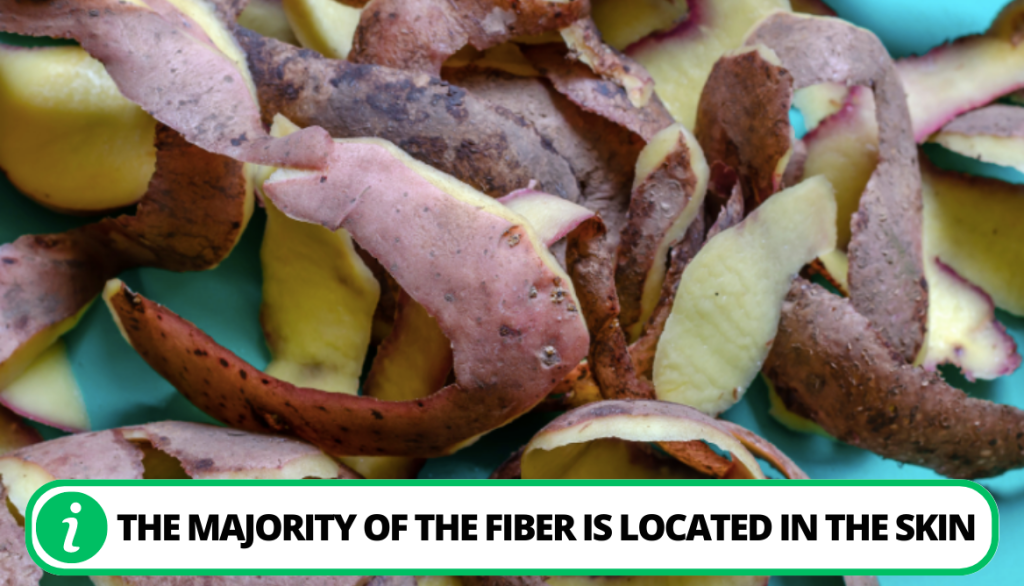
2. Beta-Carotene
Beta-carotene is turned into vitamin A in the human body, which is essential for maintaining healthy eyes and other tissues. One large cooked sweet potato with skin has 20,700 micrograms of beta-carotene, while the daily recommended consumption of 26,081.9 Units. So they are able to provide most of your daily beta-carotene intake.
3. Vitamin C and Vitamin E
The skin of a sweet potato is packed with vitamins C and E. The amount of vitamin C in one baked sweet potato with skin is 35.3 mg, which is approximately half of the daily intake.
They are low in saturated fat, contain the recommended daily allowance of vitamin E, and include 10.8 micrograms of folate per serving.
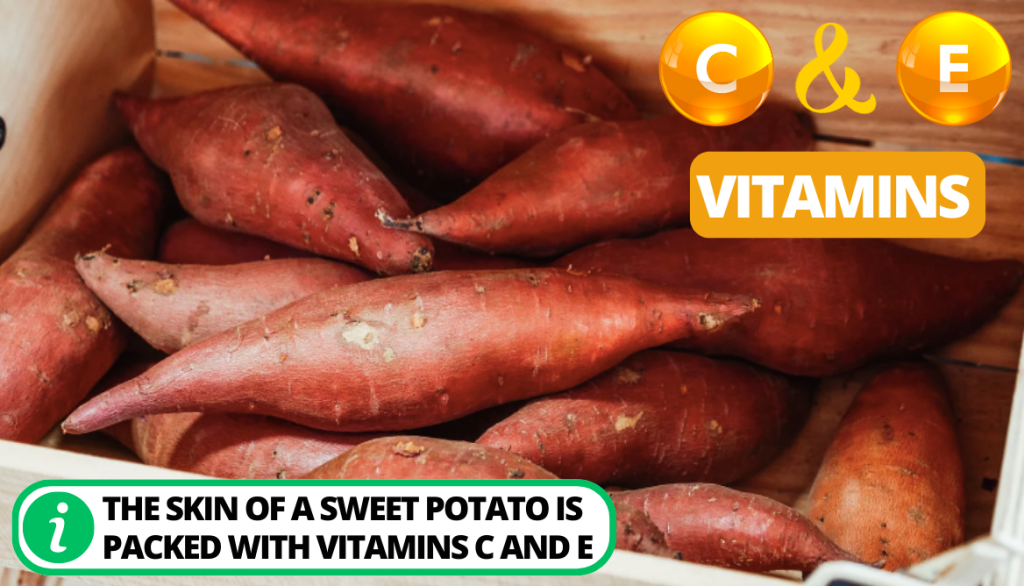
4. Potassium
Potassium has a role in controlling blood sugar levels in addition to maintaining electrolyte balance, muscle activity and strength, and neuron communication. Just the flesh of a sweet potato provides around 230 mg of potassium or about 7 percent of the DV. However, if you eat the skin along with the meat, you’ll get 475 mg of potassium, which is roughly 14% of the DV.
5. Magnesium
It assists in the absorption of calcium, which is essential for bone health. The magnesium content of a whole sweet potato, including the skin, is 27 mg (or 7% of the DV), whereas that of a peeled sweet potato is just 18 mg (or 5% of the DV).
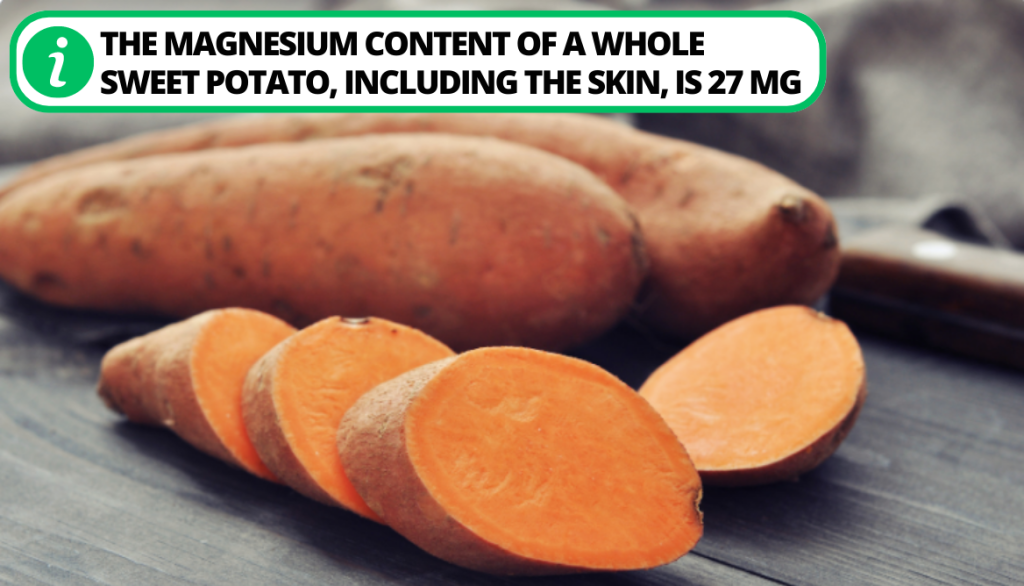
6. Manganese
The easiest method to get the manganese benefits from sweet potatoes is to eat them with the skins on. It aids in glucose regulation and bone maintenance.
What Are The Requirements Of A Healthy Human Diet?
Many people nowadays don’t eat close to enough fruits, vegetables, and other forms of fiber like whole grains, and instead consume a diet that is higher foods high in calories, fats, sugars, and sodium.
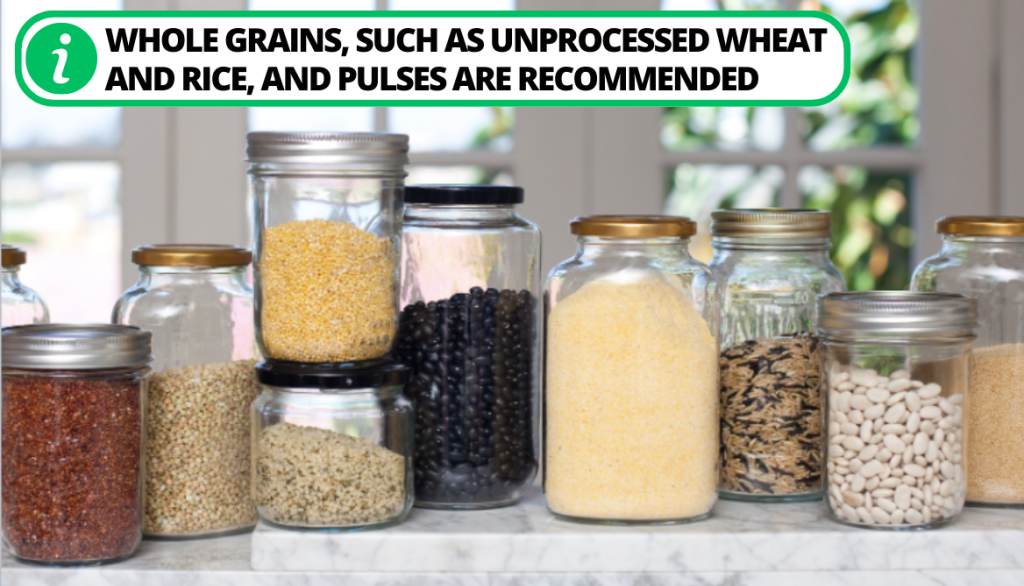
A healthy diet must consist of the following:
- Whole grains like unprocessed wheat and rice and legumes are also recommended.
- At least five servings (or 400 g) of produce each day; no tubers or other starchy roots are allowed.
- Less than 50 grams of free sugars, or a maximum of ten percent of total energy consumption, is recommended for a healthy-weight individual ingesting roughly 2000 calories per day.
- A daily intake of less than 5 g of salt (less than one teaspoon). Iodizing salt is a good idea.
For more details, you can watch this helpful video.
3 Easy Steps To Cook Sweet Potato Skins
Learn how to bake the perfect potato skins with our step-by-step guide.
Preparing the Ingredients
In order to cook perfect baked sweet potatoes, you must first clean them well by rinsing them under running water and scraping out any dirt or scraps.
- Before you eat sweet potatoes, check to see if the skin is edible. Damaged skin and dark spots should be scrubbed away.
- You can either cut the sweet potato skins into smaller pieces or choose to leave it as it is.
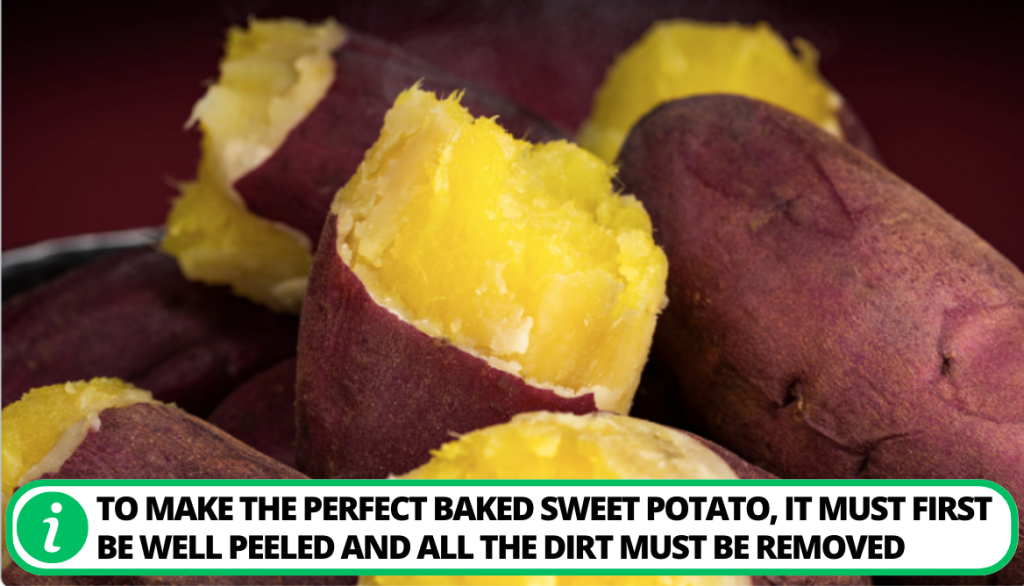
First Step: Bake You’re At 350 Fahrenheit
Baking the potatoes at 350 degrees Fahrenheit will provide a slower and possibly softer outcome. Depending on the size, baking them at 350 degrees Fahrenheit for around an hour should do the trick.

Second Step: Bake The Skins At 400 Fahrenheit
A crispier result can be obtained by baking the sweet potato skins at 400 degrees Fahrenheit. For sweet potatoes, 400 degrees Fahrenheit is a better cooking temperature than 350.
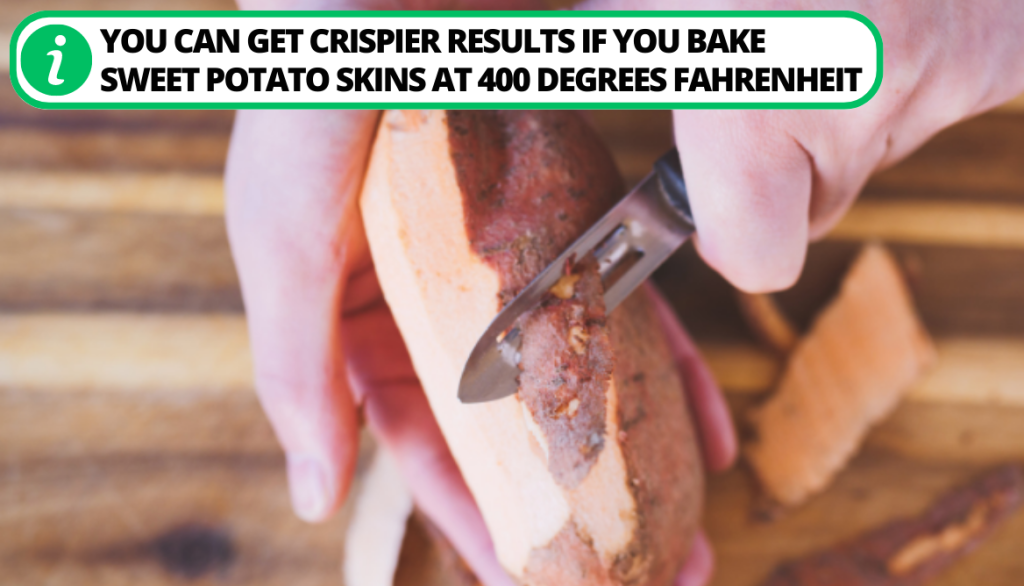
Third Step: Add Various Toppings
Baked sweet potato skins would go well with a variety of cheeses and onions. This technique may be done with anything from a microwave to a toaster oven to an air fryer.

How to Properly Maintain Your Sweet Potato Stock
Here are some helpful tips to ensure your sweet potatoes stay fresh for as long as possible in storage:
- Keep your sweet potatoes in a dry, dark, and cold location for optimal storage. A pantry or basement might serve this purpose at your house.
- Sweet potatoes lose texture when refrigerated, so do not do it. This is because refrigerators are airtight, so the potatoes will not get much air.
- Stored at room temperature, sweet potatoes have a shelf life of roughly a week.
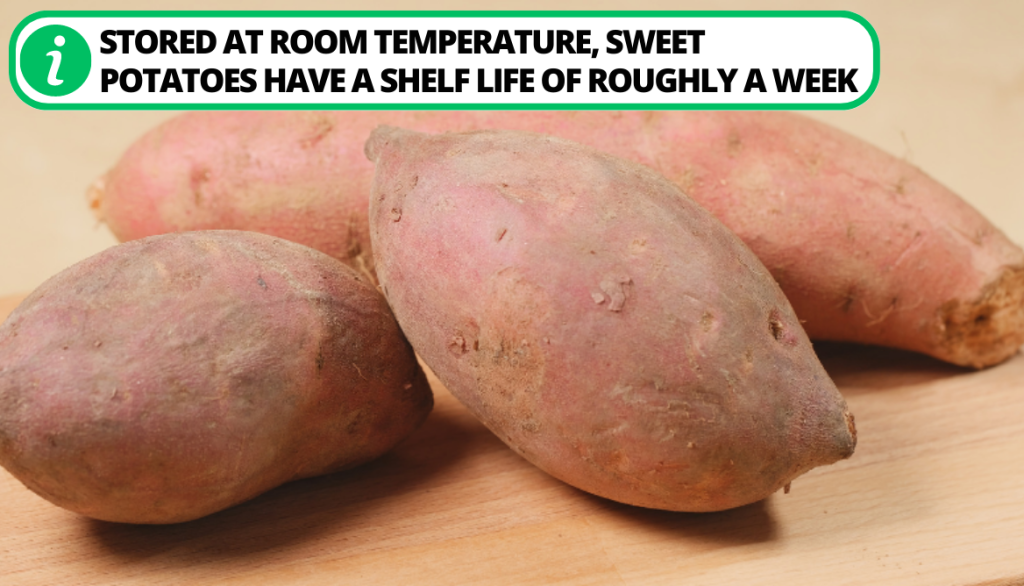
2 Potential Negative Consequences To be Aware of
Sweet potato skins are absolutely fine and healthy to consume, however, a minority of people may have difficulty digesting them. Here are some things you should be aware of:
- Contamination: Sweet potatoes are vulnerable to contamination since they are planted below ground. This contamination can be poisonous, so you need to give them a good scrub to get rid of any pesticides or dirt before you boil them.
- Solanine: The glycoalkaloid chemical solanine tends to accumulate in greening potato tubers. That’s why keeping potatoes out of the sun is crucial if you want to keep them from turning green during storage. Solanine gives tubers their characteristic bitter flavor and, in big enough doses, can be toxic. Avoid eating the tuber’s greens if you value your health.
- Oxalates: There are a lot of oxalates in sweet potato skins. Since the peels can be hard to digest, best sure to contact your doctor if you experience any discomfort in your stomach. This suggests that those who are predisposed to developing kidney stones should exercise caution when consuming.
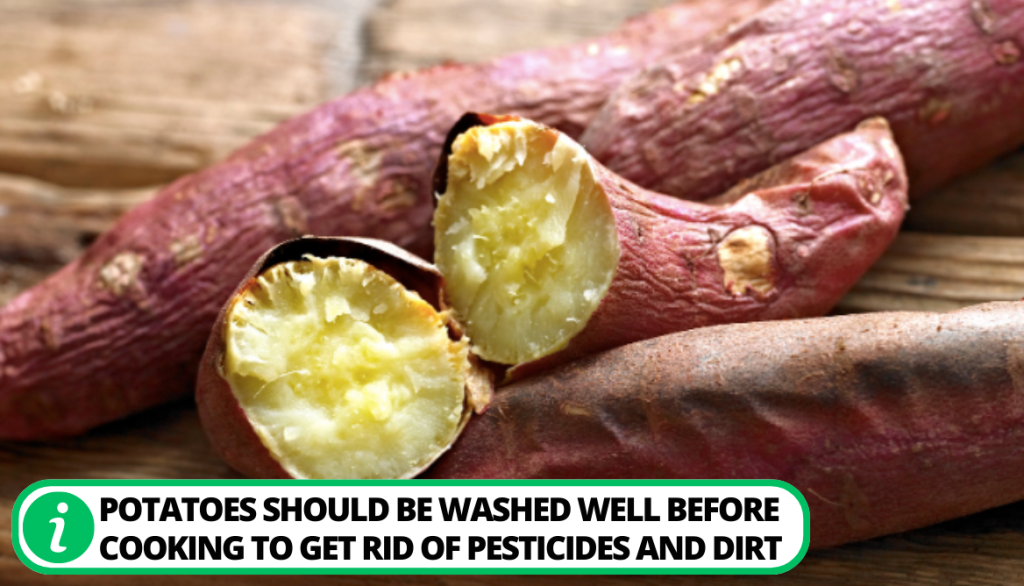
Here’s a video you should watch to get further knowledge.
FAQ
Should you eat the skin of a sweet potato?
Eating sweet potato skins is perfectly fine as they are edible and packed with healthy elements such as vitamin C, iron, and antioxidants.
Is the skin the healthiest part of a sweet potato?
Yes, the peel is the healthiest part of sweet potato as it contains much more nutrients than sweet potato flesh.
When should you not eat sweet potatoes?
You should not eat sweet potatoes if you have kidney problems or diabetes. This is because they contain high amounts of potassium and sugars. Green potatoes should be avoided as well as their skin and flesh can be poisonous.
Is it fine to eat potato skin?
It is fine to eat sweet potato skin as they are very healthy, as long as they are cooked. However, raw potato skins and green potatoes should not be consumed as they can be poisonous to humans.
What are the benefits of eating sweet potato for the skin?
The benefits of eating sweet potatoes for your skin are that they are high in Vitamins C and E. Vitamins C and E are crucial to maintaining healthy hair and skin. Collagen, the skin’s major structural protein, may be synthesized with the aid of vitamin C.
Conclusion
Both sweet potato skins and regular ones are safe for human consumption, provided they are cooked. The peels of sweet potatoes are packed with Fiber, Vitamins, Potassium as well as Manganese and Magnesium, making them an excellent choice for a well-balanced diet. A great example is such as the Japanese sweet potato skin.
To enjoy them properly first they must be cooked and prepared properly as well. Clean them thoroughly and bake them at 350 F for softer sweet potato skins or at 400 F for crunchier ones. Make a potato dish even better by topping it with cheese and onions.
What’s your take on eating these sweet skins? Let us know in the comments.
- How to Get Potatoes to Sprout Eyes: Detailed Growing Guide with 3 Options - July 31, 2023
- Weight of a Medium Potato: Revealed in Detailed Guide - July 29, 2023
- Maris Piper Potatoes: 9 Substitutes You Should Know About - July 27, 2023
Hello! I’m Jessica Zander, a garden coach and consultant based in the Boston area (zone 6b), offering virtual consultations across the country and Canada.
I’ve been passionate about gardening since the early 1990s, and in 2022, I launched You Can Do It Gardening to empower individuals to feel more confident in their gardening endeavors.
Following a 30-year career in nonprofit finance and operations, I transitioned out of that field in mid-June of 2023 due to the growing demand for coaching services. Interestingly, my years of presenting financial statements to boards and finance committees proved to be valuable experience for teaching people about gardening! I enjoy sharing skills, providing guidance and suggestions, and collaborating efficiently with clients to make significant improvements to their outdoor spaces, both small and large. I also regularly teach at the Arlington Continuing Education and Cambridge Adult Education.
My approach is direct and practical, akin to Mary Poppins, but tailored to your garden. Clients find satisfaction in saving money and taking pride in their own gardening achievements.

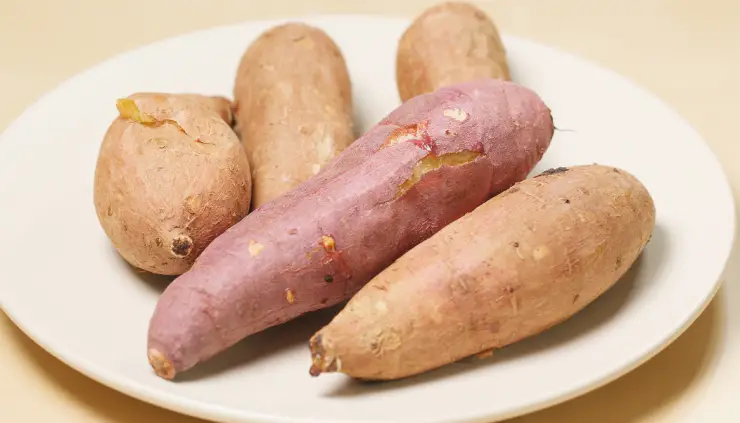
Add comment